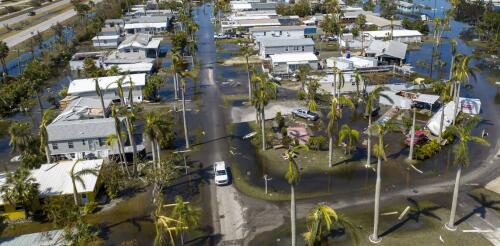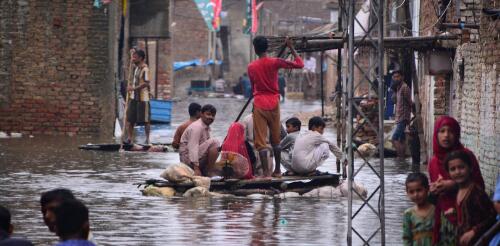Poverty
Warm water in the Atlantic Ocean and Gulf of Mexico can fuel powerful hurricanes, but how destructive a storm becomes isn’t just about the climate and weather – it also depends on the people and property in harm’s way. In many coastal cities, fast population growth has left more people living in areas at high risk of flooding. I am a geographer who studies the human dimensions of climate change and natural disasters. My research and mapping with colleagues shows that socially vulnerable communities – those least able to prepare for disasters or recover afterward – tend to be concentrated in areas that are more susceptible to flooding, particularly on the Gulf Coast. Larger, vulnerable populations Nearly 40% of the U.S. population lives in a coastal county today. Many of these areas are increasingly exposed to disasters, including hurricanes and high tide flooding that has been worsened by sea level rise. The Gulf of Mexico region, in particular,...
Millions of Americans have been sweltering through heat waves in recent weeks, and U.S. forecasters warn of a hot summer ahead. Globally, 2023 saw the warmest June on record, according to the European Union’s climate change service. That heat continued into July, with some of the hottest global daily temperatures on satellite record, and possibly the hottest. For people who struggle to afford air conditioning, the rising need for cooling is a growing crisis. An alarming number of Americans risk losing access to utility services because they can’t pay their bills. Energy utility providers shut off electricity to at least 3 million customers in 2022 who had missed a bill payment. Over 30% of these disconnections happened in the three summer months, during a year that was the fifth hottest on record. In some cases, the loss of service lasted for just a few hours. But in others, people went without electricity for days or weeks while scrambling to find enough money...
Leer in español There are questions that worry me profoundly as a population- and environmental-health scientist. Will we have enough food for a growing global population? How will we take care of more people in the next pandemic? What will heat do to millions with hypertension? Will countries wage water wars because of increasing droughts? These risks all have three things in common: health, climate change and a growing population that the United Nations determined passed 8 billion people in November 2022 – double the population of just 48 years ago. In my 40-year career, first working in the Amazon rainforest and the Centers for Disease Control and Prevention, and then in academia, I have encountered many public health threats, but none so intransigent and pervasive as climate change. Of the multitude of climate-related adverse health effects, the following four represent the greatest public health concerns for a growing population. Infectious disease...
Barbados Prime Minister Mia Amor Mottley spoke passionately to the United Nations General Assembly in September about the mounting debt many developing countries are shouldering and its increasing impact on their ability to thrive. The average debt for low- and middle-income countries, excluding China, reached 42% of their gross national income in 2020, up from 26% in 2011. For countries in Latin America and the Caribbean, the annual payments just to service that debt averaged 30% of their total exports. At the same time, these countries are facing a “triple crisis of climate change, of pandemic and indeed now the conflict that is leading to the inflationary pressures that lead regrettably to people taking circumstances into their own hands,” Mottley said. Rising borrowing costs coupled with high inflation and slow economic growth have left developing countries like hers in a difficult position when it comes to climate change. High debt payments mean countries have...
You may be hearing the phrase “loss and damage” in the coming weeks as government leaders meet in Egypt for the 2022 U.N. Climate Change Conference. It refers to the costs, both economic and physical, that developing countries are facing from climate change impacts. Many of the world’s most climate-vulnerable countries have done little to cause climate change, yet they are experiencing extreme heat waves, floods and other climate-related disasters. They want wealthier nations – historically the biggest sources of greenhouse gas emissions – to pay for the harm. A powerful example is Pakistan, where extreme rainfall on the heels of a glacier-melting heat wave flooded nearly one-third of the country in the summer of 2022. The flooding turned Pakistan’s farm fields into miles-wide lakes that stranded communities for weeks. More than 1,700 people died, millions lost their homes and livelihoods, and more than 4 million acres of crops and orchards,...



